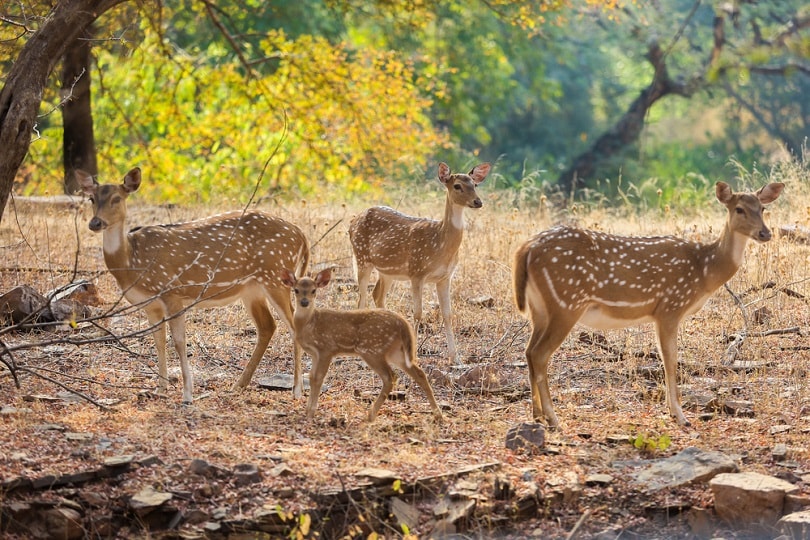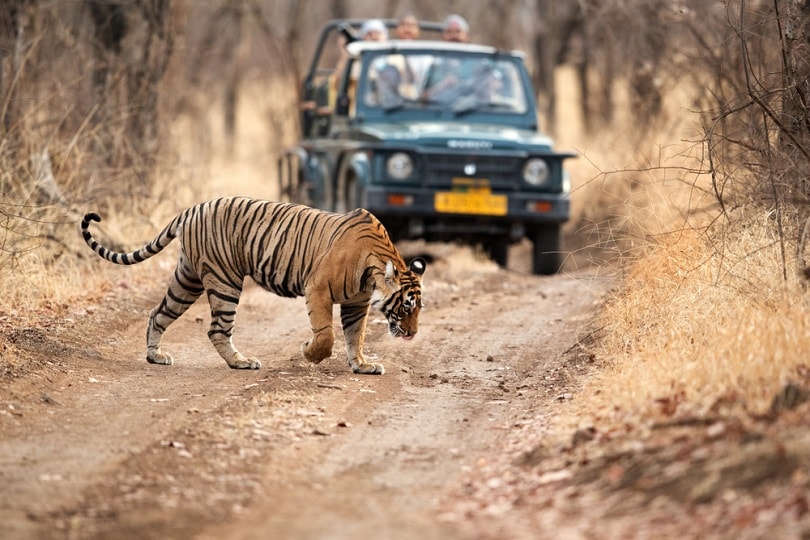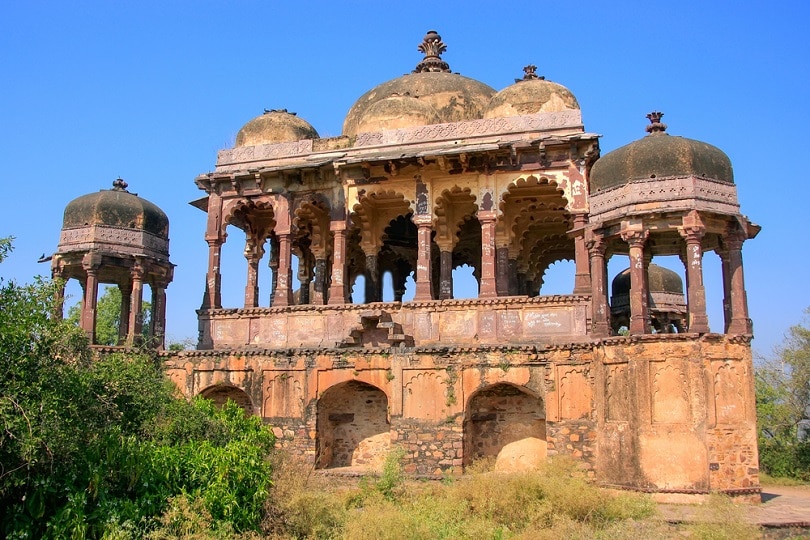India is a land of diverse habitats extremely rich in flora and fauna. While a lot of tourists are attracted towards the pristine beaches and peaceful mountains, there are numerous conserved forests and national parks that are very well known. The foremost among these are Jim Corbett National Park, Kaziranga National Park, and the royal Ranthambore National Park. Once a hunting ground for the royal families, the national park is home to numerous animals including tigers, leopards and marsh crocodiles. It is situated in Sawai Madhopur district in the south-eastern part of Rajasthan and can be reached in roughly 4 hours from Jaipur, the capital city of Rajasthan. One of the biggest national parks in India, Ranthambore National Park has attracted numerous wildlife enthusiasts, photographers, and nature lovers from across the country and abroad. One can easily understand the reason for this if one goes on a safari in the region. A Ranthambore National Park Safari gives more reasons than one can fathom for the popularity it has gained over the years.

Ranthambore National Park remains closed for visitors from July to September. Out of the rest of the year, the winter season (October – December) is considered to be the best time to visit the national park if one is visiting for leisure or sighting animals in general. However, if you wish to spot tigers, the summer season is the best. Although it is extremely hot, there are more chances to spot tigers closer to the water reservoirs. Overall, October to April is also considered to be a typical time for tourists to visit Ranthambore National park as there are chances of spotting animals and the weather is not unbearable.
One need not worry about the place to stay during your visit to Ranthambore National Park. There are several resorts within the premises of the national park that fall under the usual budget segment and offer all kinds of facilities. Apart from options that are available at a moderate budget, there are also high-end residences available at Ranthambore for guests who would like to experience the exemplary hospitality of the princely state of Rajasthan.
Needless to say, the single most important and popular activity for anyone who is in Ranthambore National Park is a safari. However, there are several other activities one may choose to indulge in and places that one may choose to see. Here’s all that you can do in Ranthambore National Park:

Oftentimes, safari is the reason people plan to visit the national park, and their itinerary is based around the time of safari. You may choose to book a slot for a safari in advance, and slots are limited. There are 2 modes to go on a safari – jeep and canter. Based on the group size and budget, you may choose one of the two. The Royal Bengal Tiger is a popular occupant of the Ranthambore National Park, and going on the tiger’s trail is often a rewarding activity as you may be lucky enough to witness the king of the jungle in its natural habitat.

If you thought wildlife is all there is to Ranthambore National Park, you’re in for a surprise. When in Rajasthan, you can definitely expect a Fort in every region and Ranthambore is no exception. One will need to hike to this glorious fort and the experience is nothing short of reinvigorating. You will be all in the company of nature, along with birds such as eagles, vultures and others flying not very high above you. The hike is especially gratifying for photographers who are sure to get some interesting views from the fort.
Once you’re done with the safari, there’s still a lot that Ranthambore has to offer. You may want to consider walking to some of the nearby areas, albeit only after consulting with an expert of the jungle. You will get to see some beautiful birds and flora along the way, while you enjoy your rendezvous with nature.
There are restricted timings to enter and exit the park, and the timing may depend on the month of the year in accordance with the duration of sunlight hours. As of now, you may choose to book a safari from 6.30 am to 10.00 am and from 2.30 pm to 6 pm in the months of October, February and March. From November to January, the morning safari starts and ends half an hour late, and evening safari starts and ends an hour earlier than in October, owing to shorter days. From April to June, the morning safari time is 6 am to 9.30 pm, while evening safari time is from 3 pm to 6.30 pm till 15th May and 3.30 pm to 7 pm till the end of June.
You may choose to book either of canter or jeep for your safari as these are the only vehicles allowed in the restricted zones. Your personal vehicles can be parked at the gates or at your place of stay.
During the summer months, there is scorching heat and you should only plan if you’re very serious about witnessing the wild habitat of the area. During this time, pack as light clothes as possible. The weather becomes quite the opposite during winters, and you may choose to pack in woolens and accessories, especially if you plan to take the morning safari, which will be absolutely freezing.
Ranthambore is easily accessible from most parts of India. Delhi, the capital of India, is at a distance of approximately 375 km and Jaipur, the capital city of Rajasthan, is approximately 150 km away. It is possible to reach Ranthambore National Park by rail and road.
Road: As stated above, Ranthambore National Park is just 375 km away from Delhi and 150 km from Jaipur, making it a pleasant drive from either of these places. It takes about 8-10 hours to reach from Delhi, while it’s just 3-4 hours from Jaipur.
Rail: Sawai Madhopur is the nearest railway station from Ranthambore, which is just a 30-minute ride from the area. There are regular trains plying between Delhi and Sawai Madhopur, while numerous trains connect Delhi with other parts of the country. Thus, it is easily accessible by rail as well.
Air: The nearest airport from Ranthambore Railway Station is situated in Sanganer, which is located on the outskirts of Jaipur. It is merely a 3-hour ride from the airport, making it a comfortable journey for all.
Numerous service providers can arrange a safari for you during your trip to Ranthambore National Park. The safari would typically cost Rs. 1700 – Rs. 2000 per person if you’re willing to take a jeep and Rs. 1100 – Rs. 1350 if you’re willing to travel in a canter. Either of the 2 vehicles can be booked on a sharing basis. To book a jeep to oneself for the safari, one may have to shell approximately Rs. 10000 and the vehicle can accommodate up to 6 people.
Ranthambore is rich in flora and fauna and one may expect to be surprised by animals during nature trail or the safari. Of course, everyone visiting Ranthambore National Park wishes to see a tiger during the safari. However, the chances of sighting a tiger are not as thick and it’s also a matter of luck to witness the beast. Some other animals that one may expect to see during Ranthambore National Park Safari include leopard, jungle cat, sambar deer, spotted deer, Nilgai, wild boar, striped hyena, and numerous others. It is suggested to have a guide that shows you the jungle if you’re not very well acquainted with the animals of the forest.
Ranthambore has a very rich history, which has been marked by various battles and conquests. Ranthambore Fort was built as a major barrier for crusaders trying to invade the territory. Ranthambore National Park served as a hunting ground for the royal family of Jaipur. The Ranthambore Fort is believed to have been built in the mid-10th century. Although the Fort is not sustained as it once used to be, the magnificence lends unmatched aesthetic appeal.
In fact, the forest and now the National Park has got its name from Ranthambore Fort. The forest was owned by the Maharaja of Jaipur and the villagers around the forest were allowed to take with them the produce of the forest. Even though the forest served as a hunting ground for the royal family, there was hardly any significant damage to the wildlife of the forest, such was the vastness and richness of the region. It was only later towards the twentieth century that the forest was exploited and forest conservation policies were formed to protect the region.

Please go back to portrait mode for the best experience